#and yet Mina is the reincarnated wife...
Text
Jonathan Harker and Doomed Bride imagery:
-Lenore (May 4th-5th): Directly referenced ('Denn die Todten reiten schnell') on the carriage ride on St. George's Eve, when evil surfaces. Jonathan, covered with flowers and a crucifix, rides with his own disguised Death all night to arrive at his octagonal room and bed, like Lenore who is supposedly led to her marriage bed, which is actually her tomb. Death and the maiden.
-Shahrazad (May 7th-8th): Jonathan, after engaging Dracula in telling him his history, says that his diary resembles the beginning of Arabian Nights. The story's heroine, Shahrazad, is the new bride of a cruel vizier who kills his own wives (on their wedding night). She distracts his wrath and delays her own doom by engaging him in storytelling. She is meant to be the next victim, once he is done with her.
An obvious parallel is May 8th, but that night it's Dracula who speaks. Jonathan is the one who normally tells stories every night, until dawn. “Why, there is the morning again!” Dracula says. Jonathan says that this nocturnal existence has been taking a toll on him.
One thing is for certain. Like her, Jonathan is next.
-Bluebeard's Bride (May 7th+May 12+May 15): Not directly referenced in the novel, however, Jonathan bears a strong resemblance to Bluebeard's new bride being warned by her lord husband to never open a forbidden room in his mansion. She disobeys and enters it. She finds the corpses of his old brides, like trophies, which he had killed. She, again, is meant to be next.
Jonathan gets warned three times and indeed disobeys, opens the room, and finds (un)dead women who the Count once loved. We find out he is to be the fourth eternally entrapped victim in their company.
Two of these stories feature a powerful noble with a brand new wife he intends to kill, like his previous ones. In both stories she delays her fate by being diplomatic and playing along for survival. Two have the theme of execution on their wedding bed. As intimate as a bite on the throat on their final night.
#dracula daily#jonathan harker#and yet Mina is the reincarnated wife...#let the bride kill her predator#bluebeard#lenore#one thousand and one nights#dracula spoilers
578 notes
·
View notes
Text
dracula 1992 is one of those group projects where everyone puts their everything in except for that one guy (script) who fucking suucks
#soundtrack? peak. effects? peak. costumes? peak. keanu reeves' terrible yet charming accent? peak. cinematography? peak.#mina is dracula's reincarnated wife and falls in love with him? i am beating you to death
122 notes
·
View notes
Note
You know, it's really funny how execution can make or break a concept.
In the Francis Ford Coppola film Bram Stoker's Dracula and Castlevania: Symphony of the Night, Dracula had a wife before he became a vampire, and said wife's death drives him to villainy. Centuries later, he meets the reincarnation of his dead wife, who he has a doomed romance with.
Yet because Bram Stoker's Dracula derailed a lot of characters not named Dracula and tried to make him out to be a tragic hero while he was still doing terrible things, I disliked the film, while the Castlevania games never pulled such a thing. It used his tragic backstory as a reason why he is the way he is, without excusing his behavior. As a result, it adds dimension to Dracula's character without feeling out-of-character.
Oh yeah, IGA clearly liked the movie and introduced elements of it with his own spin, such as Dracula descending into villainy because he returned home after an expedition only to find his wife Elisabetha dead, or him having the chance to live again with a girl named Mina (although Dracula needs to be reincarnated into a good person first lol)
Something I like about CV is that it has tragic villains, but it has a good balance between showing them in a sympathetic light and still reminding you that they're bastards. Dracula is a grieving man stuck in a cycle of rebirth, but he's also a petty monster who wants to make everyone pay for the sins of a few. Isaac lost everything he held dear through no fault of his own and fell prey to his own master's curse which lead him to a pointless death, but he's also a cruel, bitter man who unfairly caused the death of an innocent woman out of jealousy spite. Brauner lost his dear daughters in the war, but he also took two daughters from another man to turn them into vampires, and he gets called on his delusion by Jonathan. The story never tells you "look at these sad meows meows 🥺 they're not so bad after all 🥺", but they're not generic baddies either, and you come to see at least where they're coming from.
The show takes the "sad meow meow" approach when it comes to Dracula, Isaac and Lenore, and that's why I'm less than impressed. Dracula is a poor man too bereft with grief to think logically and who deserves to live again with his wife. Isaac is actually a gentle man who deserves peace after killing innocents to grow an army because he wanted to continue Dracula's slaughter. Lenore is actually a good, pacifist vampire who only wanted to protect Hector after resorting to deceit, manipulation, gaslighting and rape. You can feel the narrative holding your hand to push you to think a certain way.
Carmilla is a weird case because you'd expect her to be meowified, but she's just a generic badass #girlboss who gets no sympathy for her offscreen trauma. Still, not an elegant approach.
#castlevania#akumajou dracula#anti netflixvania#haven't watched the dracula movie so i can't say#but from what i know they did my man jonathan dirty to push dracumina#bro cmon that's lame lol#(harkula is the superior ship lmao)
22 notes
·
View notes
Text

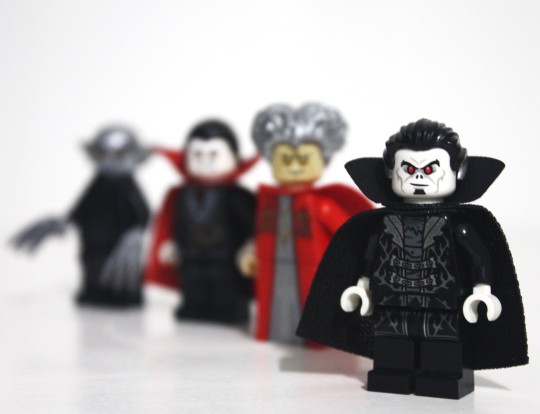
A Brief History of Dracula
Dracula has been an iconic mainstay of popular culture for nearly a century and a quarter. Bram Stoker's iconic novel went on to inspire countless adaptations and iterations of the now-stereotypical vampire. Here I have made minifigures of some of Dracula's most famous depictions and will give brief summaries of each.

The first on-screen depiction of the Count comes in 1922's Nosferatu; a Symphony of Horror, wherein the Count is portrayed by eccentric actor Max Schreck (Yup, THAT'S his name). This film is infamous for being an unlicensed depiction of Bram Stoker's story, wherein the story and characters were altered to avoid any legal consequences. Count Dracula was renamed Count Orlok, who has since become an icon of the horror genre in his own right. He is renowned for being a more primal, monstrous depiction of a vampire, where all of the guile and charisma of future variations are nowhere to be seen. I personally prefer this depiction of Dracula because it represents a long-gone era of history where vampires were terrifying creatures of folklore.
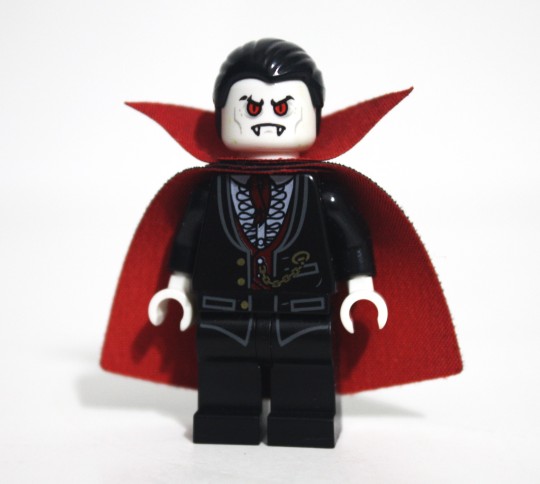
And now a man who needs no introduction; the one, the only, Bela Lugosi himself, who revolutionized not just the future of Dracula, but of pop culture as a whole. His charismatic, yet chilling depiction of Count Dracula would cement the character in the minds of people for generations. However, the events surrounding the film are what really set the standard for future depictions of Dracula, in ways often lost in the shadow of Bela's performance. For example, did you know the original Dracula film is only loosely based off of the events of the novel? Entire plot points, characters, and locations are switched around or removed entirely! This was to accommodate the stage-play version of the story, which is actually what the film was based on, not the original novel. Truth be told, going back to the film nowadays can be a rather disappointing experience. Of course, Lugosi steals the show with every scene he's in, but everything in between is relegated to a slow, boring crawl, that climaxes with the OFF SCREEN death of the Count. All in all, a historic but rudimentary step in Dracula's history, one that would be re-visited, parodied, and and redone out the wazoo until our next step in Dracula history...

The story of the Dracula stage play would be the one to be revisited countless times following the 1931 Lugosi film, as it was the one that set the standard. This would all change 61 years later, when Francis Ford Coppola directed Bram Stoker's Dracula, a film starring Gary Oldman as the titular character, and following the plot of the original novel, as inferred by the title of Bram Stoker's Dracula. The result of their efforts was... something! I'll admit, while the film was by far the most accurate mainstream version of the story yet, the director did take some creative liberties that in retrospect butcher the novel almost as badly as the original 1931 film. For example, Dracula's devious plot to stalk a new feeding ground is undercut by an artificial romance between himself and Mina Harker, who in this iteration is his 'reincarnated' wife, Elizabeth. However, perhaps the most glaring diversion from the book is the appearance of Dracula himself, who in the early stages of the film dawns an outfit that has been endlessly memed upon in the years since... and with good reason. Gone is the "thin, pale man with thick black hair, a thin white mustache, and all-black clothing". On the other hand, I guess there isn't really a passage that explicitly stages his hair wasn't styled like a butt. This was part of the film's effort to be extra stylized, and I admire that effort. but in a film that is touting itself as the first grand return to Bram Stoker's original vision, I would have liked to have seen the character of Dracula done fair justice.

And that leads us to the present day! Vampire films are as popular as ever, and Dracula himself has just made a grand return to the big screen with the Last Voyage of the Demeter. The film makes a long-awaited return to the concept of Dracula as an actual monster, rather than a dapper, charismatic pale dude. Oh and by the way that last picture above is a custom version of Dracula, one that I would most like to see brought to the big screen. But yeah, that has been my brief look at the history of Count Dracula! I hope you enjoyed and learned something new! Happy Halloween!
#lego#legocustom#legophotography#legominifigures#nosferatu#dracula#count dracula#count orlok#bram stoker#bram stoker's dracula#bela lugosi#bela lugosi dracula#max schreck#halloween#happy halloween#the last voyage of the demeter#gary oldman
28 notes
·
View notes
Text
Thoughts on why adaptations rarely depict the source material ft. Dracula Daily
Now as we come to the finish line of Dracula Daily, there are many thoughts stirring in my head about it. I feel the strongest is how much of the actual story has been lost through adaptations.
Now, I have always known this, Frankenstein taught me well about the disconnect. But being a fan of urban horror makes vampires and therefore Dracula a much closer thing for me.
The biggest change you often see in adaptations is treating Dracula as Lucy's and Mina's saviour. He comes to take them from their stifling Victorian lives and gives them agency through vampirism. After all, those stuffy Victorians would never understand the sexuality of a woman!
Yet, reading the original novel, that is almost the opposite of what happens. Both Lucy and Mina are happy in their lives. Not in a 'they don't know any better' -way but actually and honestly happy. They have significant others who love them and would move mountains for them. Though they might be socially restricted by the society they live in and Mina honestly would do better in more open times, neither woman is trapped in their life.
We all know Dracula is a metaphor for an evil foreigner trying to corrupt good British women. Yet in adaptations trying to downplay this, the actual happiness of the women is ignored in favour of making Dracula the rescuing man.
In general, adaptations tend to vilify the protagonists in order to make Dracula look better.
One of the common methods is combining Jonathan and Renfield into one character. This conviniently removes Jonathan as a competitor for Mina's love and naturally continues the mindset that mentally ill people are lesser. In these adaptations, Jonathan's big rebellion is Renfield's big rebellion. A brave but in the end futile effort to stop Dracula.
This of course also means Renfield as a mentally ill yet very much intelligent person is completely removed.
Adaptations also tend to make the Suitor Squad into much more competent and hardened vampire hunters. Van Helsing is not someone who feels great regret over killing the brides, but a cold and ruthless vampire hunter. Quincy and Arthur often are omitted and Seward's age fluctuates a lot.
In short, what makes the heart of the novel is removed. The love the heroes have for each other is twisted and removed in favour of showing how backward the Victorians were.
To me, especially after reading through the novel through Dracula Daily, the sheer amount of care the heroes had for each other makes the story. Even when the men are idiotically removing Mina from important meetings, it backfires on them. Mina, despite her own self-doubts, is one of the most valued members of the group. She collected all the information together, she used something traumatic to get back at her abuser and even when she was almost turned, could still use her wits to help her team.
Mina is the MVP of the team and making her only important through her love of Dracula or even being the reincarnation of his wife removes so much of her badassery. Mina as a character does not need Dracula to be a strong character, she is strong -despite- him.
129 notes
·
View notes
Note
If you want another adaptation to avoid for doing Lucy dirty is the 2020 graphic novel adaptation of Dracula, and the 2013 tv show, in which she is in love with Mina and Mina is a homophobe and rejects her and Lucy takes revenge by sleeping with Jonathan. So Dracula (who is in love with Mina and also a proto-feminist) targets Lucy to punish her for it and says "If you are going to act like a monster, then I'll make you one." and bites her, turning her into a vampire.
…wait WHAT???? Why is that a thing????!!! I get steadily more confused and horrified the more I learn about these adaptations (much in the same way that our good friend Jonathan gets slowly horrified by Dracula while living in his castle…too soon? I’ll see myself out).
I’m sorry Anon, you’re getting another Certified Nova RantTM, but it has to be said. Why can’t these adaptations let Mina and Lucy be friends anymore? And I don’t mean in the “they can’t be shipped way” (I don’t personally ship them, but I certainly respect it), I just mean in general. Like, literally, I can’t seem to find one adaptation where they’re even on pleasant terms??? Mina, at best, tolerates Lucy (usually because they make Lucy such a shallow character) and at worst…whatever that was you just described (can someone give me some bleach for my eyes, please or maybe @ldcurtain can brainsweep me idk??).
Stoker literally wrote them to be best friends. What is the problem with leaving them as BEST 👏 FRIENDS 👏 (or more, for the shippers in the room, but y’all know what I mean). Women supporting women shouldn’t be such a crazy concept in this day and age but I guess it is.
Another thing: I looked up the 2013 show to get a bit more of an idea on what kind of dumpster fire we’re looking at here, and guess what, y’all? It’s yet another “Mina is Dracula’s reincarnated wife” story. So yes, it gets WORSE! I have no idea who came up with that or why it’s a thing, but it exists in so many of these for no reason!!! I absolutely hate it!!! Even the musical, as much as I like it, does this — or implies it IIRC — for no reason. As many of you have said before me, it a) takes away all of Mina’s personality and agency, b) makes a woman-centered story (because while Jonathan is the protagonist, Mina is right there next to him and does take center stage a lot, as she should 💞💫) all about a man and c) is just boring at this point. Not to mention all she does in these is go “but guys 🥺🥺🥺 I don’t want this guy who killed my bff and a bunch of innocent people (INCLUDING A LITERAL BABY) to die 😫 he’s just misunderstood 😣😖 I can fix him 🥰🥹 wjth the power of love 😍🫶” girl…go back to Pick-Me school!
Give me Train Fiend Mina, give me the Mina that makes Jonathan promise to kill her if she turns into a vampire, the one that LITERALLY BEATS DRACULA AT HIS OWN GAME WITH HIS HYPNOSIS??? The one that shows the men in her life that they’re ridiculous for leaving her out of their plans because she’s too “fragile” for it. But also the Mina who comforts Jonathan when he’s emotionally broken after his encounters with Dracula, the one who doesn’t push him for answers until he’s ready to give them, the one who’s excited to be a wife because she has a loving husband (because most adaptations make him “boring” and “too perfect” :/ — that’s a whole other rant). She’s so multifaceted!!!
I want that Mina and I’m beyond angry we don’t get to see her because the producers are too busy trying to make a different movie to see the value of the original character. It’s so upsetting!! All of these characters deserve better and I will never stop saying that.
#thank you for coming to my unhinged Ted Talk#and uh…who’s excited for Dracula Daily because I sure am!#dracula daily#bram stocker's dracula#dracula#mina murray#lucy westenra#dracula posting#dracula spoilers
2 notes
·
View notes
Text
Dracula canons in Yuletide 2022
Unsurprisingly, in the wake of that whole Daily Dracula thing, there were a lot of Draculas nominated for this year's Yuletide exchange this year ‒ not just a lot of Dracula characters, but whole different adaptations of the novel. And being that kind of terrible Dracula-nerd, I figured I'd make a list and share some notes on which-version-is-which. Now, I've only seen about half of these, and can't speak to what all the other folks who actually nominated them loved about them, but I'll take any excuse to ramble on about different Dracula-adaptations at this point, so here we go.
We've got a couple of movies, a couple of telemovies, a TV series and even a musical to cover here, so I'm just gonna put them all in chronological order, starting with the novel.
Dracula - Bram Stoker (Novel 1897)
Nominated characters:
Abraham Van Helsing
Arthur Holmwood
The Correspondent
Dracula
John "Jack" Seward
Jonathan Harker
Lucy Westenra
Lucy Westenra's Mother
Mina Murray Harker
Mr. Hawkins
Mr. Swales
Quincey Morris
Damn, Daily Dracula has done it's thing: folks have nominated basically everyone. (Well... except Sister Agatha. GDI, where's Sister Agatha, people?! Has that 2020 Moffat/Gatiss version put everyone off?)
But, moving onto the adaptations-
1. Dracula (Movies - Hammer) (1958-1974)
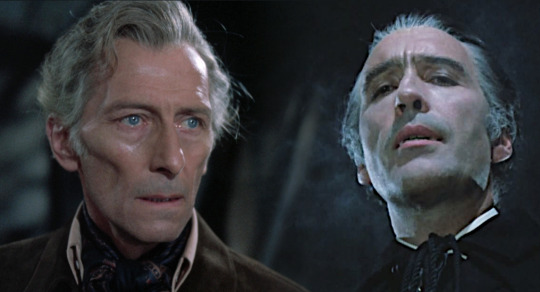
Nominated characters:
Dracula
Lawrence Van Helsing | J. Van Helsing
Lorrimer Van Helsing
Okay, yes ‒ this nomination was me. Look, Peter Cushing's Van Helsing was being reincarnated into whole new eras and having confusing chemistry with Christopher Lee's Dracula long before anyone ever thought to do the reincarnation-thing with Mina, and I want all the fic about it, is that so wrong? (Or, you know, the excuse to write some myself. Or really anything about these versions of the characters interacting ‒ I'm not picky!)
2. Count Dracula (1977)
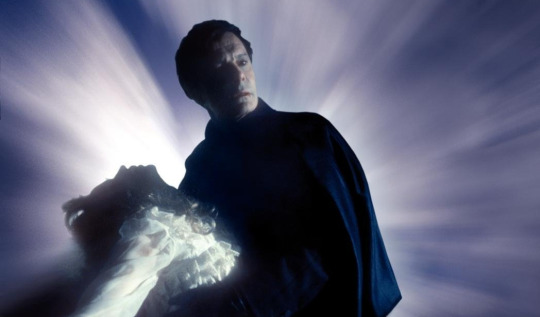
Nominated characters:
Abraham Van Helsing
Jonathan Harker
Mina Harker
Renfield
One of the two British telemovie Dracula adaptations to come out of the 1970's (the 70's was a BIG decade for Dracula). This one was the more faithful to the novel ‒ too faithful, if anything, since some new ideas or creative storytelling could have gone a long way to distract from the limitations of the budget. That said, I did like their Dracula: the costuming isn't much to write home about, but he has enough presence to elevate every scene he's in (and, I mean, if you're going to get one thing really right in a Dracula adaptation...)
3. Dracula (2006)
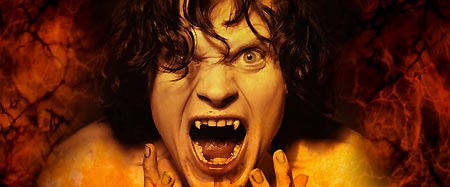
Nominated characters:
Abraham Van Helsing
John Seward
Lucy Holmwood
Mina Murray
Yet another British television Dracula, this time one where Arthur Holmwood is tricked into helping bring Dracula to British shores by a vampire-worshipping cult, in the mistaken belief the Count can somehow cure him of congenital syphilis. No, really! Seriously though, my biggest disappointment with this one was it didn't go wild and weird enough ‒ the sad soap opera life of Arthur & friends just can't hope to compete with all that high-gothic camp, and 90 minutes just isn't time for all these ideas to breathe. But it must be said, Marc Warren makes a surprisingly compelling Dracula, and his one big vampire-sex-scene with Lucy is... quite something. Basically, I can definitely see why someone might want fic about these versions of the characters ‒ there's lots in this universe left to expand on.
4. Dracula: l'amour plus fort que la mort - Ouali (2011)
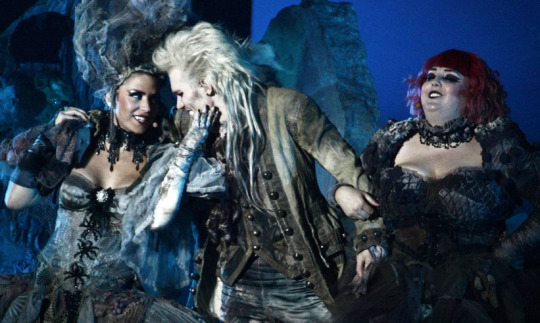
Nominated characters:
Jonathan Harker
Poison
Satine
Sorci
Well, okay. This one is, er, a French musical version? XD God, do I love the stuff you'll find nominated for Yuletide! So: not a version I'm familiar with, but going by this one summary I found, what we have here is one of the (MANY) post-1991-Coppola-version rip-offs where Mina is a reincarnation of Dracula's wife... but also one where Dracula hasn't spoken since his wife's death, and now employs three very gloriously campy servants to speak for him (Poison, Satine and Sorci, from the noms above). As someone who doesn't speak a word of French and knows this thing only from 5 minutes on youtube (I mean, the whole show's up there, though the quality's not great), these three are great value, and I can totally see why someone would nominate them for Yuletide.
5. Dracula (TV 2013)
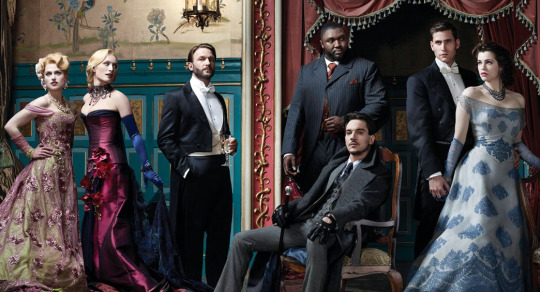
Nominated characters:
Lucy Westenra
Mina Murray
Alexander Grayson | Dracula
Jayne Wetherby
A short-lived TV series reimagining of Dracula, where the Count shows up in London posing as an American steampunk inventor called Alexander Grayson, and yet another of the (many) post-Coppola versions where Mina is the reincarnation of Dracula's tragically-dead-wife, etc. Admittedly, this is an adaptation I know only by its reputation as the show that that finally gave us lesbian!Lucy (!!!) only to have her turn around and sleep with Jonathan for dubious plot reasons (theFUCK?) ‒ but I'd be the last to judge anyone who enjoyed it as a guilty pleasure and/or just wants to run away with the characters and let them have some real fun.
6. Bram Stoker’s Van Helsing (2021)

Nominated characters:
Abraham Van Helsing
Arthur Holmwood
John Seward
Lucy Westenra
Huh. Well, okay. First point: the poster is a lie ‒ this actually seems to be a fairly-straight, (very) low-budget film adaptation of the novel ‒ just one that starts about when Van Helsing arrives (ie, when Lucy is already very ill). So, more drawing-room-drama than Hugh-Jackman-material. Have not seen it, but have a trailer! Now you know just about as much about it as I do.
Honourable mentions
In the "do I even count this?" bonus round, we've also got the 2016 Van Helsing TV series (nominated characters: Axel Miller and Catherine) ‒ a show set post-vampire!apocalypse and starring a Van Helsing descendant. There's also a character called Van Helsing nominated for the Kyuuketsuki Sugu Shinu | The Vampire Dies in No Time manga, and a "Dracula Vance" nominated for a video game called Panilla Saga, about whom google will tell me nothing very illuminating. Ah, well. Seriously though, the total number of different Van Helsings nominated in this year's Yuletide must be some kind of record.
I'd also be remiss not to mention that the original 1872 Carmilla is also nominated, as is the excellent 1970 Hammer adaptation The Vampire Lovers. And rounding out our list of Victorian vampire lit, some weirdo has also nominated Varney the Vampire, but that one really needs its whole own post...
#Dracula#Dracula Daily#Yuletide 2022#Hammer Dracula#Count Dracula (1977)#Dracula (2006)#Dracula: l'amour plus fort que la mort#Dracula (2013)#Bram Stoker’s Van Helsing (2021)
27 notes
·
View notes
Text
@groovygirlie Sorry I’m going to post this way because I got a bit carried away and so it won’t fit the responses BUT (spoilers if you haven’t read Dracula but I’ve got so many instances I love!)
Gosh there’s so much I love about Dracula! I love the characters, but especially Mina, Jonathan, and Quincey! They’re such good people thrown into a terrible situation. Mina is compassionate and smart and devoted and kind. And I love that Mina’s kindness makes those around her better and braver people simply because of how she treats them. Jonathan is willing to die trying to escape, but he still tries to stop Dracula. His devotion to his wife is beautiful. They really are such a cute couple. (The idea that comes up in lots of adaptations with Mina being a reincarnation or interested in Dracula drives me up the wall because the characters are so clearly adoring to one another. She wouldn’t be interested in Dracula she has Jonathan.) Quincey is one of my favorite characters of all time. I love that he plays up his cowboyness for fun (while at heart being a true cowboy) but when serious things happen he’s very no nonsense. He’s not just willing to put his life on the line for the girl he loves, but for those around him who are kind and good and become his friends.
And we get this spookyy, suspenseful, and sometimes sad/tragic look at all these people. We feel Mina’s anxiety over Jonathan being gone. We feel sorry for all these men trying to desperately so save Lucy and rejoice with the characters when they succeed with Mina. But because it’s done mostly as journals, we also get little random thoughts they think or things they like.
To me the moral of the story is, to quote Mina, “the world seems full of good men, even if there are monsters in it.” We see truly horrific and sometimes gruesome things happen in the story and we also see people doing cruel and bad things, and yet the kindness and human ties are so strong.
Mina gives Quincey someone to cry to. Quincey immediately becomes someone willing to do anything for Mina.
Jonathan goes through a horrific trial to the point he tries to force himself to forget but trusts and loves Mina enough to let her make the decision about whether he should be told about his adventures again. And when he realizes it’s real, even though it almost killed him and almost made him lose his sanity, he puts himself at risk again to stop Dracula from harming others.
Van Helsing puts his own life on the line simply because he’s friends with Dr Seward and wants to genuinely protect even random strangers.
Arthur is willing to do something he knows will hurt him because he thinks it will (and does) save the immortal soul of the woman he loved.
Mina is willing to pity Dracula who is a monster and does a terrible thing to her because she realizes she would want to be treated with sympathy if her fate were like his.
Jonathan is willing to do literally anything to stay with or protect his wife. He refuses to let her suffer alone. (They really are a “for better or worse. In sickness and in health” type of couple.)
And we see such wonderful friendship! Lucy and Mina are so happy together and never jealous and wish each other all the best. Mina is protective over Lucy and always there to listen to her. Seward and Quincey hold no hard feelings toward Arthur when they all fall in love with the same girl and he gets chosen. None of the guys get angry at Lucy for not loving them. Quincey and Mina are such a cute friendship as well.
And we see this kindness in the random strangers all throughout the beginning who keep trying to stop Jonathan from going to Dracula’s castle or giving him crucifixes or praying for him. They don’t have to and they know that Dracula is an actual threat and could hurt them and they still try to warn him to stay away.
So this is a long winded way for me to say that to me, even with its flaws, it’s a book I absolutely adore.
21 notes
·
View notes
Note
Hey Roro, what ideas did you get for the prompts of soulmates and reincarnation? I havent heard you talk about those stories yet
Hi, anon. Well, an anonymous left an idea, but while I was reading that idea, it occurred to me that I could be inspired by the love story of Dracula and his wife Mina. Yes, it's going to be a vampire story mixed with umbrellas.
I haven't started writing it yet because I'm not even sure which couple to choose, my heart says Klive, because writing Five as a vampire would be interesting. On the other hand, it could also be one of the Sparrows. I don't know yet.
#the umbrella academy#klaus hargreeves#five hargreeves#klive#fic request#harcest#the sparrow academy
4 notes
·
View notes
Text
Things about Dracula 1931
Bela Lugosi is awesome.
But as much awesomeness as Bela Lugosi brings to the screen, he is still outshined by Dwight Frye whose portrayal of Renfield is fucking phenomenal. Seriously, do it for Renfield.
Renfield is younger, cuter, and probably even more insane than in the novel.
Van Helsing is way more intense and significantly less boring. A very straightforward kinda guy who does not mince words which is completely opposite of the novel. I like him a lot.
Instead of being a backstage threat, Dracula actually goes out of his way to make friends with these people. I wish that had happened in the novel.
Renfield. Just Renfield. He’s great, okay.
Look at him, like damn. If you need blood, my neck is all yours, baby.
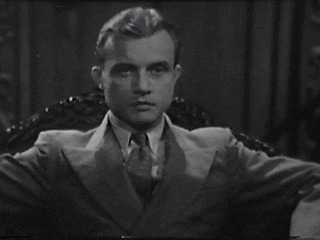
Dr. Seward goes from being a reluctant Dad Friend of six at 29 to being an Actual Dad at very old. He’s Mina’s father in this version. At least it’s not as weird as it could have been: he could have been Lucy’s father.
There is no Quincey Morris. A moment of silence, please.
Arthur doesn’t exist, either. Lucy actually falls in love with Dracula. Which I really liked, too, and I’m surprised she doesn’t get the reincarnated wife trope in the more modern adaptations, that makes far more sense to me.
Probably one of the VERY FEW adaptations where Lucy isn’t treated like a whore who should be punished, she’s just a naive goth girl who happened to fall in love with the wrong guy.
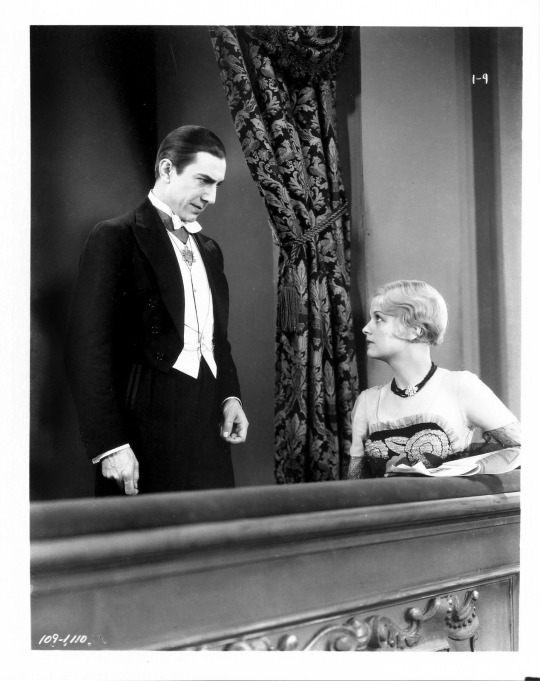
Seriously, she’s goth, she recites death poetry. She’s amazing.
Speaking of love
JONATHAN IS THE LOVE INTEREST.
And that’s like.... ALL he is. His only role in this movie is to be like almost overbearingly protective of Mina. They aren’t even married yet in the whole film. Hell, RENFIELD is the one who goes to Castle Dracula instead of Jonathan.
Jonathan hates Dracula because he thinks Dracula is scaring Mina with spooky folktales. This boy is more of a brat than his novel version.
He is just as stupid as his novel version, if not more so. But at least he’s very, very cute. Like just stand there and look pretty, Jonathan. I wonder if that’s exactly what the director told David Manners to do with his character.
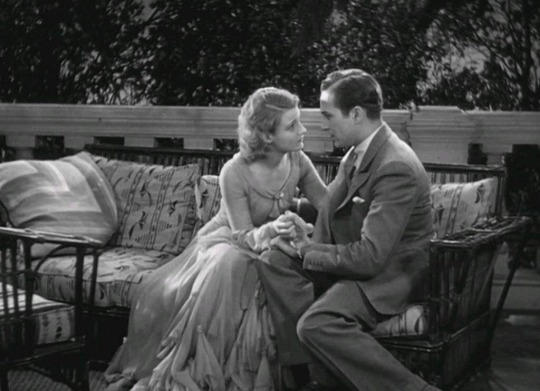
Mina is just a damsel in distress in this movie and nothing more, and it’s still very clear that she tops in this relationship.
Mina tries to eat a completely oblivious Jonathan and it’s glorious.
Jonathan: Look at the pretty moon.
Mina: Look at your pretty neck.
Jonathan: What?
Mina: What?
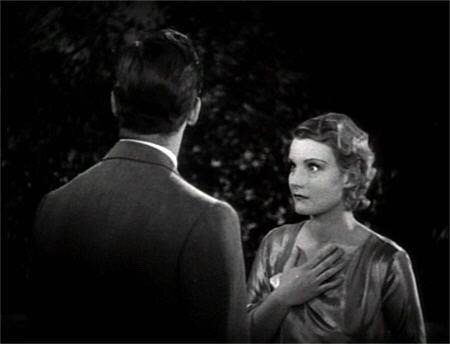
Van Helsing stops her from omnomnoming her own husband — er, boyfriend — with a crucifix which causes Mina to freak out and Jonathan is like “How dare you scare my very near future wife!?” Jonathan, honey...
He’s so fucking dumb.
But it’s cute, okay. Idk if any other actor could pull it off, but David Manners just makes it cute. Just... what a sweet summer child.
Van Helsing is the only one who gets anything done around here.
His little cat-and-mouse game with Dracula is awesome, and again, something I actually wish happened in the novel.
Van Helsing: You’re a vampire.
Dracula: And what of it?
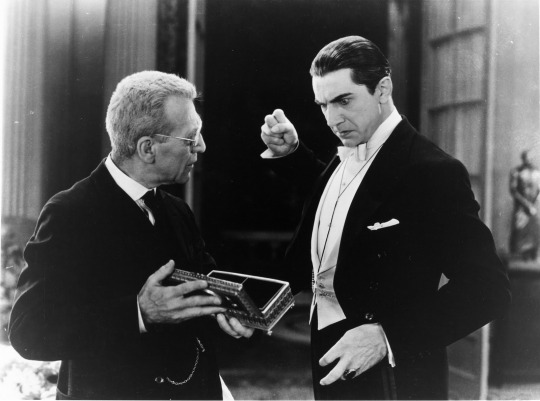
The whole month long road trip in East Europe is nixed from the script, so they kill Dracula at Carfax Abbey next door. And by “they” I mean Van Helsing. Jonathan gets NOTHING, remember. He just runs around yelling “Mina! Mina! Mina!” For like the entire last five minutes of the movie.
So all in all, it’s not a bad adaptation, and quite enjoyable. I personally adore this movie a lot so it’s definitely worth the watch. Dracula has much more of an active character presence by interacting with the rest of the cast, Van Helsing’s and Renfield’s intensity crank up to like 11. The other characters are quite watered down but they are still likable, just a very rich family that didn’t ask to be harassed by a vampire.
42 notes
·
View notes
Text
“DRACULA”: BOOK vs. MOVIES
Part 4: Novel Details
Welcome to part four of my five part essay comparing Bram Stoker’s novel “Dracula” to those film versions most commonly referred to as those “faithful to the novel.” To understand why I wrote this please check out parts one through three.
BUT FIRST...
This essay is NOT spoiler free. And whether you love or hate any of the films being compared here is beside the point and a subject best left to posts dedicated to film critique. This essay is SOLELY about which films are the most faithful to the novel... period.
Reminder: those versions most touted as “faithful” that I compared are:
“Nosferatu: a Symphony of Horror” (1922) aka “Max Schreck Version”.
“Count Dracula” (1970) aka “Christopher Lee Version”.
“Bram Stoker’s Dracula” (1973) retitled “Dan Curtis’ Dracula” aka “Jack Palance Version”.
“Count Dracula” (1977) aka “Louis Jordan version.”
“Bram Stoker’s Dracula” (1992) aka “Coppola version”.
And now...
PART FOUR: NOVEL DETAILS
A STOLEN BABY AND OTHER FIDDLY BITS
In the novel Dracula stops his brides from feeding on, and presumably killing, Johnathan Harker yet satiates his hungry brides by feeding them a baby stolen from a local village. The next day the mother arrives at the castle crying and begging for the baby to be returned. In answer, Dracula compels a pack of wolves to descend upon the poor woman. No version shows the mother or the wolf attack but the baby being fed to the brides is seen in the Christopher Lee, Louis Jordan and Coppola versions.
In the novel Dracula casts no reflection in mirrors. Which Johnathan Harker discovers as he’s shaving and Dracula enters his room. This is depicted in the Christopher Lee, Jordan and Coppola versions. But not in either the Max Schreck or Jack Palance versions where it never comes up so we actually don’t know.
A crucifix repels vampires in the novel as well as all versions except the Max Schreck.
Before escaping Castle Dracula Johnathan Harker finds Dracula’s tomb and attempts to kill the Count with a shovel to the head but the shovel’s blows have no effect. This is depicted in the Christopher Lee and Louis Jordan versions. While in the Jack Palance version Harker makes the attempt with a stake before being attacked by Dracula’s Gypsy minions.
Upon escaping Castle Dracula Johnathan Harker in the novel is found delirious, emaciated, half-crazed and suffers a long recovery in a Budapest convent. Harker never escaped Castle Dracula in the Jack Palance version. In the Max Schreck Version he is found and recovers in a hospital. In the Christopher Lee Version he is found and recovers in an asylum NOT ran by Doctor Seward, but by Van Helsing (here, Seward only works there). Harker recovers in a Budapest convent in both the Jordan and Coppola versions.
Once getting to England, in the novel Dracula keeps a cache of boxes filled with Transylvanian soil at the English estate he purchased (Carfax Abbey) with many more such boxes hidden all over London. Van Helsing and the vampire hunters find and destroy all the boxes forcing Dracula to flee London with his one remaining box. No version shows a hunt for boxes all over London. The Louis Jordan, Coppola, and Jack Palance versions all show the vampire hunters destroy the boxes at Carfax Abbey.
Van Helsing in the novel attempts to purify Mina by blessing her with a Holy wafer held to her forehead, but instead of blessing, the wafer burns and scars Mina. This is seen in both the Jordan and Coppola versions. These are also the only versions to show Mina being used as bait to lure Dracula’s brides so they may be killed by Van Helsing.
WINNER FOR MOST RIGHT: a tie between the Jordan and Coppola versions
PERIOD ACCURACY
“Nosferatu” resets the story in Germany and was atmospherically brilliant. The Christopher Lee and Jack Palance versions look like the most successful of Hammer films where the sets and costumes look so cool that no one would either notice or care if anything is inaccurate.
Coppola had a more original approach, foregoing any pretense of authenticity in favor of a fanciful, artificial soundstage look, intentionally evocative of the classic Universal Horror films. Added are surreal visual influences from both the silent German “Expressionist” films of F. W. Murnau and the French silent films of George Milies. Combine all that with an art direction and costume aesthetic that was pure gothic fairy tale and Coppola’s film becomes a work of true phantasmagoria. But was this the most faithful approach?
Not even close.
It is the BBC Produced Louis Jordan version that painstakingly went for absolute historical accuracy regarding the sets, locations, art direction and costumes. They even shot in some of the very same seaside locations Bram Stoker used in his Novel. For example the Whitby seaside steps Mina and Lucy are seen descending are the very same steps described in the novel, which are the very same steps Stoker himself often strolled up and down during his life. Steps that I understand still exist to this day.
Winner (no question): Louis Jordan version
OVERALL PLOT FLOW
The Max Schreck and the Jack Palance versions both follow the book rather closely in their first halves but then veer off to become their own works, with the Palance version at least remaining truest between the two to the spirit of the novel’s plot.
Both the Palance and Coppola versions add basically the same backstory for their Counts. Despite not giving the Count any definitive personal backstory in the novel, it is pretty much known that Bram Stoker used the historical figure of Vlad the Impaler as his inspiration for Dracula.
Jack Palance version screenwriter Richard Matheson was the first to take this knowledge and use it as a Dracula backstory and also added the new wrinkle of Mina as a reincarnation of Dracula’s long dead wife. This I believe inspired James V. Hart who expanded greatly on both Matheson concepts in his screenplay for the Coppola version. So for you folks who heaped praise (or criticism) onto Coppola for the Vlad/Mina “Love Never Dies” backstory... sorry, Matheson came up with it first.
On the other hand, the Christopher Lee and Louis Jordan versions pretty much follow the plot with only a few alterations mostly involving character inaccuracies. The Christopher Lee version however severely truncates the story probably for running time as the Lee version is 97 minutes while the Jordan version is almost an hour longer. As such, the Jordan version is just packed with little details from the novel that I’ve never seen in any other filmed version.
For example there is a sequence in the novel where Mina and Lucy are watching an oncoming storm while resting on a bench on the edge of a seaside graveyard. An old retired sailor happens along and makes a rather distasteful joke about the nearby grave marker of a suicide victim, a joke which appalls the two women. A day later the old sailor is found dead, drained of blood. Dracula’s first victim as he arrived in England that night in the storm. While this sequence is marvelous for building the mystery in the novel, it does little to advance the plot cinematically, thus it is left out of every filmed version EXCEPT the Louis Jordan.
So, between the Christopher Lee and the Louis Jordan versions, when it comes to following the plot, the Jordan version is essentially the book put on screen.
Winner: Louis Jordan version
Coming tomorrow, the essay conclusion...
PART FIVE: THE FINAL BATTLE & THE DEATH OF DRACULA

4 notes
·
View notes
Text
My top 15 love interests for romantic incarnations of Dracula (No, they’re not all Mina)

If I was to do a list of favorite love interests for Dracula it would be...
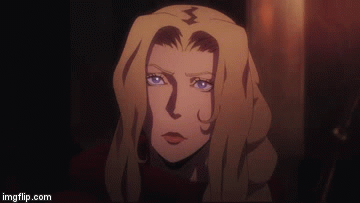
Keep reading for a full list...
16. Bonus: Lydia from Dark Prince: the true Story of Dracula.
I list this one here because she’s technically an historic figure and the rest are fictional so I am not sure if she should count or not. The historic Dracula’s first wife’s name has been lost to history even though the river tributary under Poenari Castle was named for her. The film Dark Prince: The true Story of Dracula starring Ruldolf Martin names her Lydia.
Though this film is mostly historic the ending implies that the two are both vampires and walking together through eternity.
Vladislaus Drakuyla AKA Vlad III of Wallachia, AKA Vlad Tepes (The Impaler)’s first wife died by suicide and the film hinted that this might have been enough to enable her to come back as a vampire.
Right before Vlad’s assassination in 1776 or early 1777 (at age forty-five or forty six) in the movie we hear her voice, which suggests she’s either waiting for him or has set into motion turning him into a vampire to be with her.

15. Sir Integra Hellsing from the Hellsing.
In the manga and anime Hellsing (and Hellsing Ultimate OVA), instead of having been destroyed by Doctor Abraham Van Helsing after the events of the Dracula novel, Dracula was instead captured and through arcane means bound to serve the Van Helsing bloodline for eternity. The family founded the Hellsing organization for fighting monstrous threats. Dracula took on the name Alucard (his own name spelt backward) and may have gone slightly crazy...
He became fiercely loyal to Integra Hellsing, the most recent descendant of Abraham van Helsing to become his Master. It is a very strange relationship to say the least...

14. Xander Harris from Buffy The Vampire Slayer.
In Buffy The Vampire Slayer season 5 we have Buffy encounter Dracula for the very first time. Here he is played by Rudolf Martin, the same actor who played Dracula in Dark Prince: The True Story of Dracula. In the episode Dracula takes Xander to be his Renfield-like henchman. At the end of the story Xander is free from Dracula’s spell however the story of their relationship is not over yet.
According to the Buffy: The Vampire Slayer season 8 comics Xander and Dracula have formed an unusual relationship. Xander taught Dracula about modern fun and pleasures and Dracula became more and more protective of Xander. When Buffy came and retrieved Xander (again) from Dracula, this time Dracula fell into a deep depression. Refusing to feed or take care of himself Dracula’s hair and claws grew and he deteriorated into his elderly form. When he found out that Xander was coming to pay him a visit, he hastily made himself presentable and de-aged to a more attractive / youthful appearance.
Now the two bicker like long time lovers. I ship it.
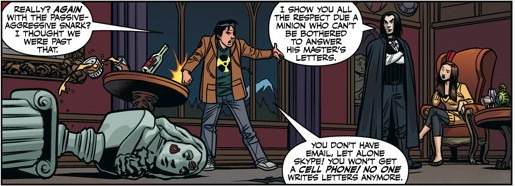
Oh, and Xander still calls him master, despite himself.
Further note on this one: Dracula is actually smart for NOT getting a smartphone. All cellphones can be traced via GPS. Do you really want a tracking device in your pocket while hunting human prey? You just made Blade and Buffy’s jobs a little too easy there. A practical vampire would not carry such a device while hunting.
Unfortunately this comic retconned a few important aspects of the TV show version of Dracula and even claimed he doesn’t actually conjure storms, but senses them coming (contradicting the beach scene from the Buffy vs. Dracula episode.) I wish people would stop de-powering Dracula.
13. Jonathan Harker (Multiple versions):
Dario Argento said that his version of Dracula was attracted to Jonathan Harker. And in Frank Wildhorn’s Dracula The Musical (Particularly the German production called Dracula das Musical) the scene “Fresh Blood” (Blut) is very errotic.
Fresh Blood (Blut) now featured Jonathan Harker being tied to a bed and his shirt removed as he’s fed upon by Dracula. But first by Dracula’s brides and grooms of the castle.
Also one of the lyrics in the English language version of the song indicates he wants Jonathan AND Mina as his and plans to make them both vampires. Thus reaffirming the polyamorous version of Dracula.
https://www.youtube.com/watch?v=slZps47LgKQ

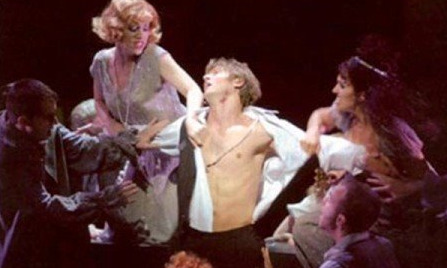
Dracula gets particularly “grabby” with him during his de-aging sequence.


The relationship is pretty one sided...
12. Renfield (multiple versions).

The German production of Frank Wildhorn’s Dracula the musical (Dracula das Musical) has Dracula with brides and grooms as opposed to just brides. Despite this change toward bi or panasexuality, this particular relationship is very one sided.
Renfield is very much in love with Dracula in many depictions of the character. This mad man is obsessed with “The Master” and in the Frank Wildhorn Dracula musical he sings a song about how much he loves The Master and how wonderful he is. The reprise version looks as if Dracula is about to kiss him as they sing a slowed duet version of the refrain but this is where Dracula, instead, snaps his neck.
Here is the English language version of The Master’s song (Not the slowed reprise duet.)
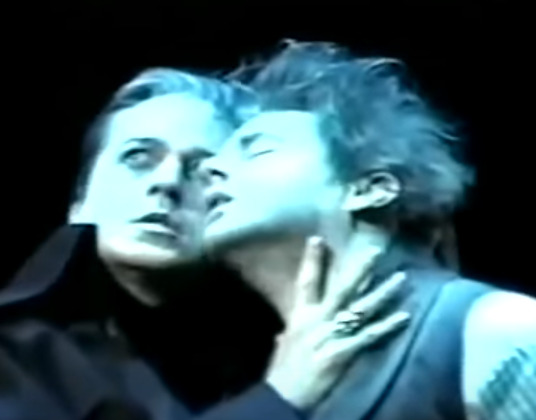
https://www.youtube.com/watch?v=3-v1O-asrHg
There is a deleted scene from Bram Stoker’s Dracula (1992) where Renfield laments that he has lost Dracula “to the pretty woman.”
In Love at First bite, and some other films Dracula actually does give Renfield immortality however. I suspect the Love at First Bite version is a half-vampire since he can go in the sun (this version of Dracula burns in daylight) and he still needs glasses for his nearsightedness but he has apparently worked for Dracula for at least a century so he was clearly granted immortality even if he can’t turn into a bat or hypnotize.

11. Carmilla Karnstein from The Batman vs. Dracula.
Carmilla is an odd one because in her original novel she’s portrayed as a lesbian. She is a vampire whose novel predates Dracula’s own novel. Her prey of choice are young virginal women. And she can turn into a large grey or black cat. She is powerful and independant and in The Batman vs. Dracula she somehow ended up Dracula’s wife. So I will assume this version is bisexual and they’re probably polyamorous and not at all monogamous.
The version of Dracula in Fred Saberhagen’s Dracula books, and the 1979 Dracula movie starring Frank Langella are also polyamorous though he claims Mina (Lucy in the 1979 film) is above the others. Poly-Romantic / Pan-Romantic / and Demi seem to be recurring traits for romantic versions of Dracula.
Dracula spends part of The Batman vs. Dracula trying to bring Carmilla back from the dead, using the very life essence and soul of VickI Vale to fuel the spell. Unfortunately things don’t quite go as planned.
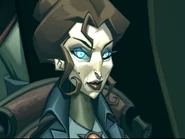
10. Dracula’s mysterious male lover from Marvel comics, Avengers issue 016 (2019).
Marvel’s Dracula has been confirmed as having had male and female lovers. This is not the only bisexual or panasexual Dracula in pop culture. The German production of the Frank Wildhorn Dracula the Musical (Dracula das Musical) gives him brides and grooms in his castle, Dario Argento has said his version of Dracula is bisexual, and Marvel has now confirmed that their version of Dracula has had male and female lovers.
I don’t know much about this pretty elfish, semi-androgynous character. Identified as a male vampire lover of Dracula’s from Marvel’s War of the Vampires storyline, Dracula wept blood tears when this unnamed character was killed. And he (the lover) was clearly willing to die for Dracula. So this spot is for you, you poor, unnamed elfish male vampire lover!


I don’t know his name so I am going to call him Samuel. And in my mind he was the pretty castle librarian whom Dracula became infatuated with. There. Headcanon achieved.
Further note: Usually if you make Dracula cry, it means he’ll take brutal and violent revenge. This is a universal truth with all versions of Dacula. Never make him cry.
I would put him at a MUCH better spot on this list but he doesn’t get a lot of time in the comic and we don’t know much about him. If we only knew more about him he would have a far better spot on this list. Look how adorable and tragic he is! He could easily be one of my favorites but all we know is that his death brought Dracula to tears and that yes, they were lovers. I seriously considered moving this one up the list but I’m bias for this sweet, androgynous, vampire-boy.
Seriously, I want to know this guy’s story. Dracula cries for him! In front of his enemies, he weeps for him! Give us this story, Marvel! Who is he???
9. Amy Peterson from Fright Night (original 1985 version).
This one is a bit dubious because the vampire is Jerry Dandridge but the 1985 novelization of the film suggested that Jerry is actually count Dracula. Fright Night played with popular vampire tropes and a few were homages to the 1960s soap opera, Dark Shadows. In Dark Shadows the vampire, Barnabas Collins, discovered that the young waitress (and later governess) Maggie Evans, was the uncanny look-a-like of his lost love, Josette. Because of the physical similarity he was convinced she was the reincarnation of his lost love even though with reincarnations you could literally end up looking like anyone or even being another gender after reincarnation. Barnabas had a painting of Josette that showed the physical similarity.
In Fright Night Jerry Dandridge meets Amy and becomes obsessed when he realizes how much she resembles a woman he, too, has lost and is pining for. When Jerry is finally destroyed by the has-been horror actor turned real vampire hunter, Peter Vincent, and also by Amy’s boyfriend, Charley Brewster, his last words are crying out for Amy.
Though this relationship is very one sided and Amy is clearly under age, when you’re a teenager (as I was) we can’t help but find ourselves fantasizing about being Amy in Jerry’s arms during the nightclub dance scene or the “Come to Me” scene. Because of problematic aspects of this relationship and because Jerry was never officially revealed as being Dracula in the film, that’s why this is at spot number 8.

The Jerry Dandridge / Dracula character is apparently in a polyamorous relationship as he has a live-in (apparent boyfriend) Billy Cole. Billy does not exist in the 2011. Fright Night remake, which removed all romantic aspects of the character.
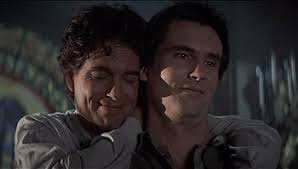
8. Evan Barrington-Cabot from the Graphic novel Series Dracula: The Company of Monsters.
In Dracula: The Company of Monsters graphic novel (published in 2011) an evil corporate executive known as Conrad orchestrates raising Dracula from the dead in the hope of using and exploiting him. Conrad’s nephew, Evan comes to understand and respect Dracula and Dracula’s code of honor. The two respect each other. And like with most stories where Dracula falls in love with the protagonist he decides to stalk him and declare him his.
When Dracula takes his revenge on his captors, Evan is the only one that he spares.
He even watches the young man sleep, the way Dracula is often depicted doing to female love interests. And he makes it very clear he plans on making him a vampire down the line.
This relationship is kept somewhat ambiguous otherwise I might consider putting it at a better spot on the list.

7. Ericka Van Helsing from Hotel Transylvania 3.
A direct descendant of Abraham Van Helsing (the famous monster hunter) Ericka has a cruise ship for monsters with the sole purpose of luring Count Dracula, whom falls in love with her. He “Zings.” Monsters supposedly can only zing once so there is a fan theory that she is the reincarnation of Mavis’ mother. This is likely true since reincarnation or look-a-like of a first love (or both) is a popular trope in vampire fiction started by Dan Curtis for his TV show Dark Shadows and later carried over into his Dracula movie starring Jack Palance.
Ericka ultimately realizes she loves Dracula too and the cruise ship captain and hotel owner end up together. Dracula proposes to her at the end of the film and she says yes.
Also though Dracula is several hundred years old in Hotel Transylvania he is physically in his forties, I suspect Ericka (as a mortal) is biologically older than him, which is a clever touch since Dracula is usually going after young girls in pop culture. It’s good to see him with an older (well, in appearance) woman. (”When you’re six hundred years old there’s no such thing as a cougar.” - The Emo Vampire Song.) Hotel Transylvania 3 is actually my favorite of the franchise and is a sweet film.

6. Cindy from Love at First bite.
Love at First Bite is a comedy from 1979. Think of Coming to America meets Splash in that a supernatural character, a proverbial fish-out-of-water comes to New York looking for love.
Dracula believes Cindy to be the reincarnation Mina (“But I lost her in that damn London Fog!”). He knows her from magazine pictures and interviews and after communists drive him out of his castle he moves to New York where he plans to seduce her. This consists of licking her ankles while in dog-form, telling her that she is more than merely her appearance, that he understands her and her anxieties. And dancing to “I love the Night Life”. The two ultimately fall in love and knowing the truth about Dracula, Cindy opts to spend eternity with him as his vampire queen. The ending has them fly off together, in bat form, to Jamaica.


5. Lucy from Dracula (1979).
In the 1979 version of Dracula, Frank Langella plays Count Dracula. Though technically a remake and based on the same play the Bela Lugosi Dracula was based on, there are some distinct changes. For starters in this version the character we mostly know as Mina in most adaptations is named Lucy and the Lucy character is named Mina. The names are swapped.
Not only that but in this version it’s Dracula who is initially seduced. Though engaged to Jonathan Harker in Edwardian England (set roughly twenty years after most versions of Dracula, which are usually set in 1891) Dracula arrives for dinner at the home of his new neighbors. Here he offers to hypnotize the sickly Mina to relieve her of a headache (that he very likely induced). Lucy protests, showing her dislike and distrust of such methods and the manipulation of the will of others. This bold reaction delights Dracula as he is not used to conflict from women.
The next step in the possibly-accidental seduction of Dracula comes when Lucy turns on a phonograph record player and asks him to dance with her, improperly, right in front of her fiance.
And later after some tragedies, when the rest of the household is unable to uphold an invitation to Dracula’s house for supper, Lucy goes alone.
I like this one because in this one it’s mostly Dacula who gets seduced. Lucy wants him and she gets him. She knows what she’s doing. Also Dracula isn’t a whining, brooding, emo vampire. He is lonely but he LIKES what he is. He’s proud of what he is. He’s fierce and predatory and has all of his traditional powers, including being able to turn into a bat, and wolf, and conjure storms. So few adaptations remember the wolf form these days.
This was the first truly empowered version of the Mina character (though named Lucy). And she is not some look-a-like or reincarnation of a previous love. No. He simply falls in love with her for who she is.
It is very likely this version of Dracula is demi (falling in love with personality before any physical attraction) which is also true of the Castlevania version of Dracula and the version in Fred Saberhagen’s Dracula books.
Also based on the last dialogue from Dracula to Lucy (that he would return to her once they stopped hunting him) I choose to believe he faked his death in this version, especially by the wolf howl at the very end and the cryptic smile on Lucy’s face before the end credits. Long live The Count and Lucy!
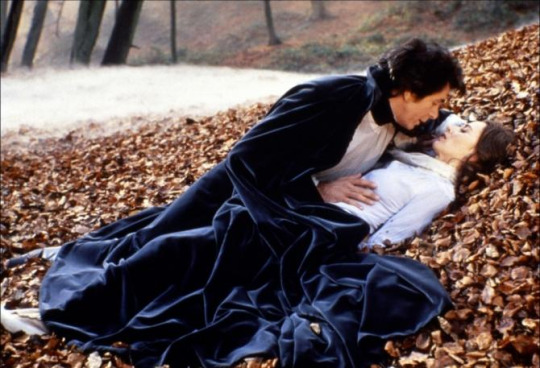
4. Mina from Fred Saberhagen’s Dracula books.
Very similar to Lucy in the 1979 Dracula starring Frank Langella, this is a romantic interest where Dracula sees the person as his equal.
This Mina is not the reincarnation of a lost love, nor does she resemble a lost love. When we first see this version of Mina it’s in the novel The Dracula Tape (retelling of Dracula from Dracula’s point of view.) Dracula shows up at her door to deceive her and try to manipulate her into getting the heroes to leave him be but she doesn’t fall for it. And she wrings the truth out of him. She’s clever and also manipulative and the two become lovers.
And in the contemporary world of the later books, though Dracula is having affairs with Mina’s own descendants (It’s a bit weird, I know but at least he’s honest about it.) he still seeks her for comfort and guidance. And constantly refers to her as his greatest love. It’s creepy yet sweet.
In this continuity he fakes his death at the end of the Dracula Tape. And when Mina finally dies of apparent old age she comes back as a vampire because his blood is in her system. As his kind of vampire can change their age based on how heavily they feed, she (like Dracula) can look any age she chooses. (Dracula usually looks roughly forty-five-years-old since that’s about the age he was when he died in his mortal life but sometimes he deliberately abstains from feeding to look older or even elderly.)
And with Mina to guide him, Dracula becomes the protector (and casual seducer...) of her mortal descendants.
Mostly the relationship and personality (as well as powers) are very similar to that of the 1979 Dracula film starring Frank Langella.

Another reason I like this version of Dracula is the cause of how he became a vampire is sort of ambiguous. He dies as the historic figure dies but in the Fred Saberhagen novel “A Matter of taste” (Book six of his Dracula novels) it’s revealed that loyalists stole his body and severed head and left a look-a-like in his place.
They prepared him for burial where candles kept going out and the wounds started to heal (including his head apparently re-attaching itself) so they hastily buried him. He rose as a vampire and insisted that it was a “transition of will” that he refused to die. In other words he has no idea how or why he came back as a vampire.
Considering most vampires in the Fred Saberhagen Dracula novels are created by a mortal drinking the blood of a vampire, after having been fed on, this made Dracula very unique and mysterious. I really like this origin. It’s my favorite origin for Dracula since it explains nothing while explaining everything.
It’s a lot better than someone renouncing God and drinking blood from a stone cross...
This one could easily be my favorite female love interest for Dracula, tied with the one I have listed for number 1 but I put two others between this and the number one spot because of their significance to pop culture and my love of some musicals.
3. Mina from Frank Wildhorn’s Dracula the Musical.
This is essentially the musical adaptation of the 1992 Bram Stoker’s Dracula movie. The biggest difference is there is no mention of Dracula’s mortal life’s wife and no suggestion that Mina resembles (or is the reincarnation of) an old love. The only problem is there is little explanation given as to why he falls in love with her other than that he seemed to have a mysterious psychic link with her all along.
Still, the songs are beautiful and the relationship is sweet and this version of Mina is very likable.
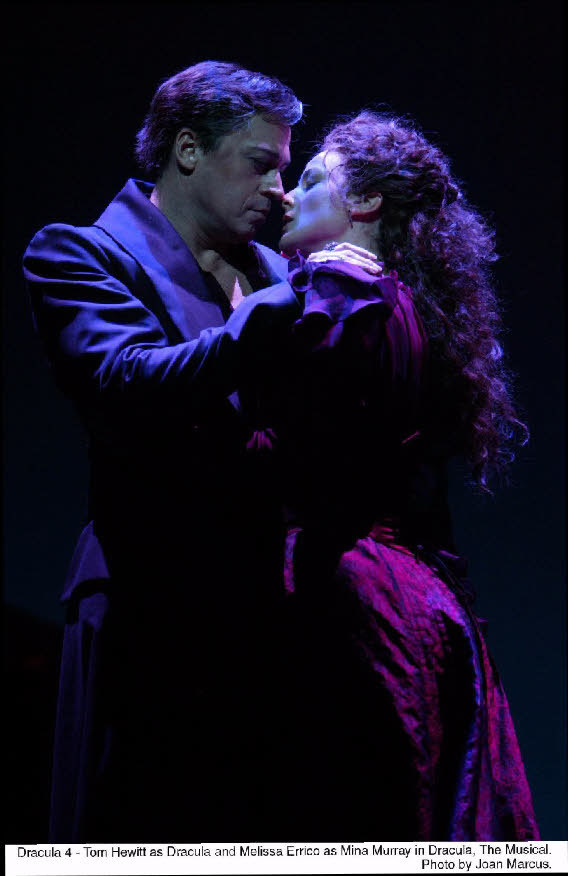
2. Mina from Bram Stoker’s Dracula (1992 film):
Before I proceed with this one, yes. Yes, I know Dracula and Mina are not actually lovers in the original Dracula novel. I know that when he makes her drink his blood in the novel that it’s more of a rape. But this version plays with the love story Dan Curtis created for his Barnabas Collins and later carried over into Dracula.
Dracula is seeking the reincarnation of his deceased mortal-life wife. And not only was he lucky enough to find her in a look-a-like body but she’s also the age the first wife was when she died (by total coincidence!). At first it seems like he just thinks she looks like his dead wife and he can seduce her but he seems shocked when she starts to actually remember details of his home. (watch his expression as she starts to talk about his homeland. He’s genuinely surprised).
The two begin a consensual love affair that sadly ends with Mina putting him out of his misery.
A least it’s implied he was forgiven and got to go to Heaven despite the things he had done (Much like in Stoker’s original novel. No, really, that’s in there.)
I like the Frank Wildhorn musical adaptation of this version of Dracula slightly better than the original non-musical movie because in the musical you don’t get the weird bleeding cross / renouncing God origin for Dracula’s vampirism. and 2. Mina doesn’t seem to be anyone’s reincarnation or look-a-like. They’re just in love (Even though yes, I know that is not in Bram Stoker’s novel.) But I do have a soft spot for this one because most of it does follow the novel and the musical probably would not exist if not for this movie.

1. Lisa Țepeș from Castlevania.
Lisa fast became one of my favorite love interests for Dracula. She went to Dracula’s castle seeking knowledge and bravely stood up to the antisocial vampire.

Much like Lucy from the 1979 Dracula film she talked back to him. She was bold and brave. She wanted to learn and she wanted the ability to save lives and damn it, she would risk her own life to do it. Dracula fell in love with this personality almost instantly. It was her personality, not her physical beauty that he became infatuated with.
And they were both happily nerdy together. She humanized Dracula and reminded him that there is good in the world. Dracula married her and the two had a son together.

For her sake he learned to trust and love. But it was for that love that he was driven to madness by her death...
Lisa was only forty-five-years-old when she was burned at the stake as a witch while simply trying to help people as a medical doctor.
This version of Dracula was a good man deep inside but pushed to madness and governed by his vampiric instincts he couldn’t bear to be without her. And when she was murdered he blamed almost all of humanity (save for a select few) for it.
And so Dracula began a subconscious quest to be destroyed by going through the motions of wanting to destroy the world. This is not the only plot where Dracula plans to destroy the world and the protagonist catches on that it’s an elaborate and “world’s longest suicide note”. This was also done in the Hammer horror film The Satanic Rites of Dracula. But here it was for heartbreak of a deeply lonely man.
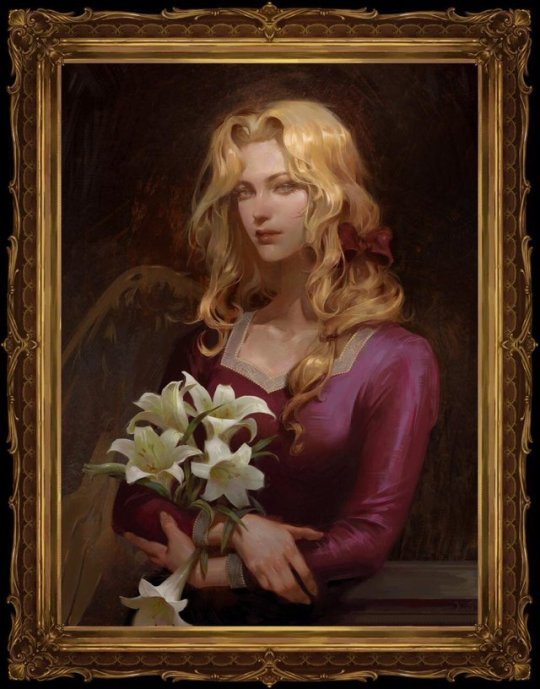
#Count Dracula#Lisa Tepes#Castlevania#Hotel Transylvania#Love at first Bite#Mina Harker#Bram Stoker's Dracula#Carmilla#Renfield#Ericka Van Helsing
92 notes
·
View notes
Photo


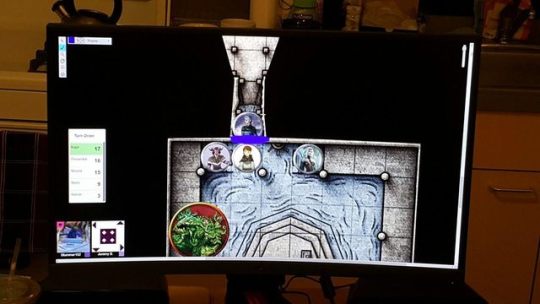


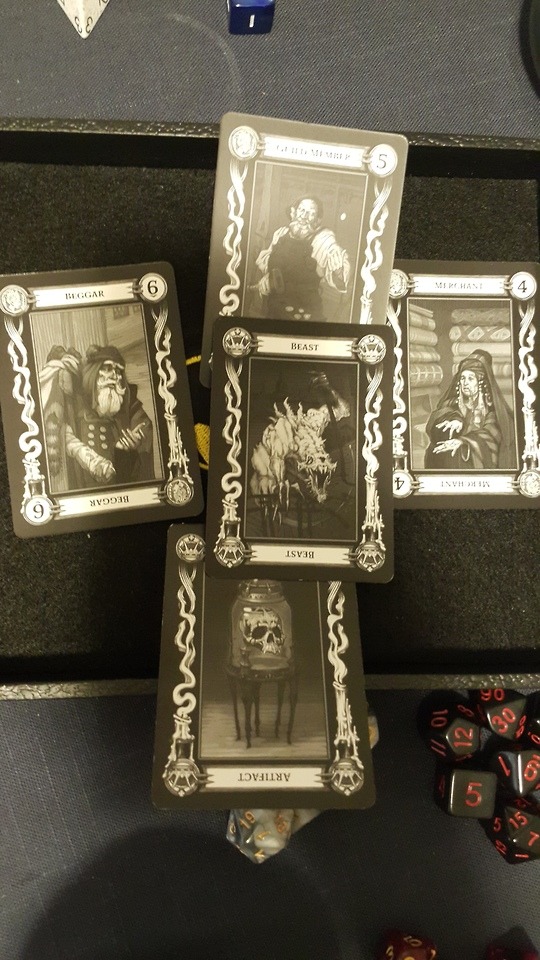
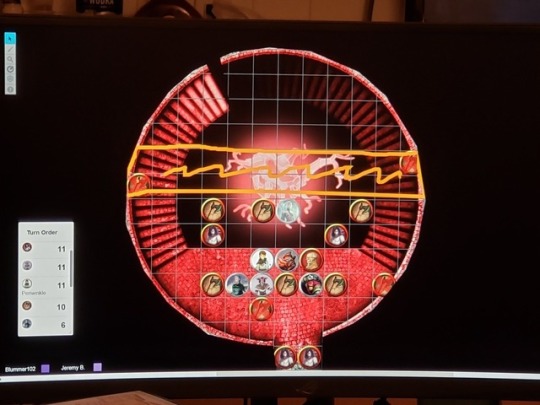
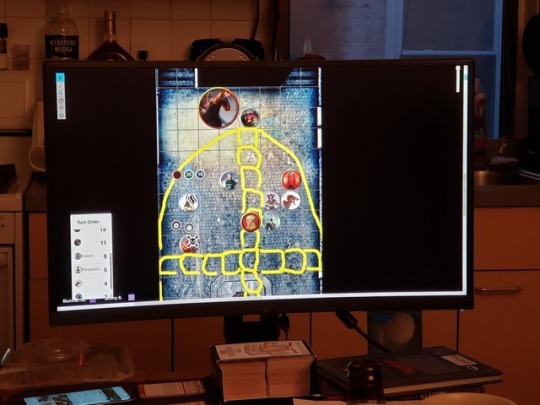

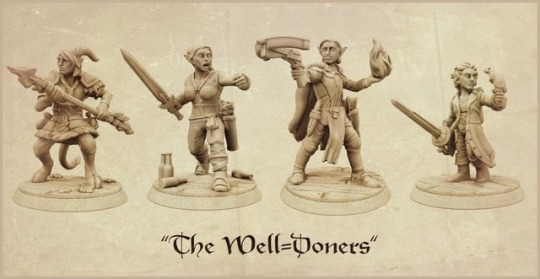
A look at D&D’s Curse of Strahd
From about October 2018 to August 2019, I led a group of four friends through Curse of Strahd, the latest campaign book featuring a dive into the realm of Dungeon & Dragon’s most famous vampire, Strahd von Zarovich. It went well, and it was an interesting experience for me as a Dungeon Master, since this was my first time using one of Wizards of the Coast’s official modules. In the past I’ve always come up with my own homebrew adventures, and I still homebrewed a good chunk of Curse of Strahd, remixing characters and formulating story twists on the fly once I learned the ebb and flow of my group.
One of the things I love most about D&D, however, is that such behavior is encouraged, and pretty much all of the major 5th Edition releases outright tell DMs that they shouldn’t hesitate to make a campaign “their own” by only following the book when necessary. Thus, the version of Curse of Strahd that my players ran through was an experience specifically tailored to them - one where a motley crew known as the “Well-Doners” (like a well done steak...or a stake to the heart of a vampire!) were sucked into Strahd’s strange valley of Barovia and forced to ally together for the sake of survival...aided by a few key comrades, including a funny gnome mage who’d lost his magical mojo, the reincarnation of Strahd’s lost love, a grumpy monster hunter and a massive ranger and his dwarf wife. If I ever run Curse of Strahd again for another group, it’s very likely that many of these key comrades - as well as the general crux of the adventure - will turn out completely different.
To all enterprising DMs who might wish to run Curse of Strahd for their own groups, it’s worth first noting that this is very much a Ravenloft campaign. Ravenloft is the setting that sprouted from the 1983 module of the same name, originally devised by Tracy and Laura Hickman and then expanded upon during the heyday of D&D 2nd Edition. In a nutshell, it’s D&D’s horror setting, and the horror is very much steeped in the gothic tradition, with a heavy dollop of foes inspired by the Universal Monster Movies of the 1920s to 50s, sprinkles of Eastern European creepiness and a dash or two of dark romance to complete the mix. I quite like this combination because it reminds me of the melancholy yet deeply beautiful world of Mordavia in Quest for Glory IV: Shadows of Darkness, one of the formative experiences of my youth and a game that has a great soundtrack for the backdrop of any Ravenloft campaign. (Interestingly, Quest for Glory creators Lori and Corey Cole were D&D players before they went on to design computer games, which means that the gothic realm of Mordavia surely is a clear descendant of Ravenloft.)
But horror of any variety isn’t necessarily everyone’s cup of tea, and certain parts of Curse of Strahd - if run straight from the book - can veer quite sinister, because Barovia is ultimately a crappy place presided over by a crappy undead warlord. The introductory adventure of the module, dubbed “Death House,” actually deals with ghostly children who’ve died of starvation in a haunted manor due to the cultist ways of their mad parents. It’s entirely possible to make these kids untrustworthy antagonists in order to emphasize that the Ravenloft setting simply does not mess around, but since I was running this campaign for a group of four new players whose prior experience with D&D ran the gamut from limited to absolutely zero, I decided to make them into a spooky but still likable duo who could “possess” the players’ characters and offer sassy running commentary on the monsters infiltrating the manor. Like Casper but with a tad more snark, in other words - and the endearing nature of the children made the moment where my players had to lay their corpses to rest and confront their sad origins all the more compelling.
This act of balance - between ensuring that players recognize this as a dark adventure but also making sure that just enough light and humor alleviates the depression - is one that I tried to perform during every session of our game, and I’d encourage future Curse of Strahd DMs to do the same. I’d also encourage enterprising Dungeon Masters to perform a similar balancing act on the monsters and scenarios that permeate the adventure - specifically on the ones in the Death House opener as well as Strahd himself.
Death House, more specifically, is described in the book as a means to help the party quickly progress from levels 1 to 3, but played as is, it’s quite possible for players to get absolutely curb-stomped by everything within the manor - particularly a “final boss” that they’re technically not supposed to engage with, at least in a fair manner. Veteran RPG fans might relish the challenge, which is more reminiscent of Call of Cthulhu than D&D, but newbies might not like having to re-roll a character because their first one got wrecked by a Shambling Mound after only a few hours of play. So, retool Death House to suit the needs of your party - in my case, I limited the encounters somewhat to prevent a steady drip of HP and also gave my players a few tips on how to beat tricky baddies via those aforementioned ghost kids.
The opposite strategy goes for Strahd von Zarovich himself, who might be the big bad of Barovia but is surprisingly squishy when confronted by a hardy group of level 8 or 9 players, especially if they’ve found all the fancy sunlight-shooting artifacts of the adventure that can limit his powers. I can’t count the number of posts I’ve seen on the D&D Reddit or a Curse of Strahd Facebook group I’m in where frustrated DMs have written something like “Strahd was killed by my players within two rounds, where did I go wrong” - and in order to circumvent this from happening in the last session of a shared storytelling experience that had nearly spanned a year, I took a heavy pair of tweezers to Strahd’s stats and gave him three forms, each with their own HP. The first was his regular vampiric self, the second was him riding on his Misty Steed-summoned horse Bucephalus, and the third was basically Strahd going into berserker mode with black angel wings bursting from his back. (I stole the concept art of Satan from Castlevania: Lords of Shadow 2 for that. Worked perfectly!)
Speaking of Castlevania, I drew inspiration from the recent Netflix series - which I’ve written about here and here - when it came to developing Strahd’s actual personality, because even though the book updated his original Bela Lugosi-esque appearance into something more regal and fantasy-inspired, his essence is still something of a two dimensional bad guy, and the fact that one of his eternal missions in undeath is to make the reincarnation of his original lover fall for him is a problematic pill to swallow in 2019, even if it is meant as an ode to Dracula’s obsession with Mina Harker in Bram Stoker’s original novel. And so I decided to make my version of Strahd similar to the depressed, weary-of-life Dracula in Netflix Castlevania, turning him into a vampire of complexities - a guy who’s been immortal for so long that he almost wants the players to kill him, a man who believes he’s entitled to the love of a woman yet somewhere deep down realizes the inherent selfishness of that belief, and a lord who’s grown bored with his kingdom yet can’t quite relinquish the power he’s held over it for centuries. My Strahd, in other words, was still a bad dude, but at least a somewhat deeper bad dude that the cardboard cutout as presented in the book, and one of my players even described him as “a little like Kylo Ren,” which I took as a compliment.
Before I wrap this up, I’d like to return to the concept of the balancing act with regards to the structure and scope of Curse of Strahd, which is a true sandbox adventure. Players are not required to visit half of the locations outlined in the book, and the replayability factor is high, because the various artifacts that you need to defeat Strahd, as well as the specific non-player characters likely to assist you along the way, are dependent on a tarot card reading that occurs near the start of the adventure. The locations that I found the most important for my players were the towns of Barovia and Vallaki, the Wizard of Wines Winery, Yester Hill, Van Richten’s Tower, the Ruins of Berez, and Castle Ravenloft itself. Other groups online swear by Krezk, a third town that my players never bothered to visit (though I would have urged them to go there if we’d had any clerics or paladins in the party, since Krezk is a town with a giant church), and the Amber Temple, the lair where Strahd obtained his undead powers (a place I feel is best suited for players of neutral or evil-leaning alignments). Your mileage may vary, but if you’re going to DM this module, one of the best bits of advice I can give would be to see which locations your players are naturally inquisitive about, and then focus on those. Exploring every nook and cranny of Barovia can quickly turn into a slog otherwise.
With all this in mind, I think it’s time for the so-called “Well-Doners” to leave the world of gothic horror behind for a bit. They’ve somehow managed to find their way back to their home plane and the city of Waterdeep, and only one of the party was infected with a seemingly fatal curse after their stay in Ravenloft. What further quests await, I wonder, and what new campaign book will I hack apart to suit my players’ tastes? That’s for me to know, for them to find out, and for another long blog post examination...sometime in 2020, hopefully!
All photographs taken by me.
3 notes
·
View notes